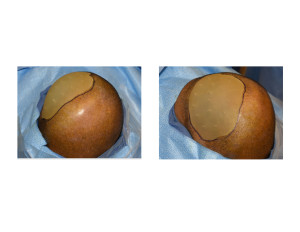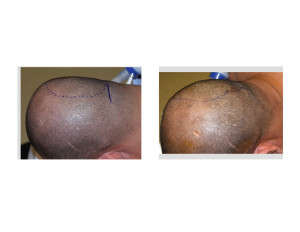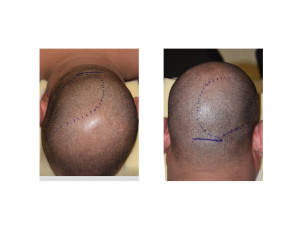Background: Plagiocephaly or craniofacial scoliosis is a well known craniofacial deformity that truly affects the whole craniofacial skeleton. The most well known component of it is the flattening of the back of the head which for many patients may be the most severely affected area. At the least treating the asymmetric back of the head is the number one priority in its treatment in adults.
The shape of the back of the head becomes very apparent for short hairstyles or when one shaves their head. The exposure of the back of the head is more common in men for these reasons either by an elective hairstyle or when one is losing or has lost their hair. But it also can affect women who, despite having more hair, may be equally self-conscious about it. They may avoid being seen coming of the shower with their hair wet or when swimming due to their being a flat side of the back of the head.
Unlike in infants, correction of adult occipital plagiocephaly is done by onlay bone augmentation. There are numerous methods of building up the bone of the skull by various synthetic materials. Having used all of them, the best method for occipital augmentation is the creation of a custom skull implant made from a 3D CT scan. No hand created intraoperative method can match the symmetry and smoothness of the implant contours created by computer designing.



Highlights:
1) Plagiocephaly is most commonly associated with a flattening of one side of the back of the skull.
2) An important component of correction of plagiocephaly in adults is augmentation of the flat side of the back of the head.
3) The best method for correction of the unilateral occipital plagiocephaly in adults is a custom skull implant.
Dr. Barry Eppley
Indianapolis, Indiana




